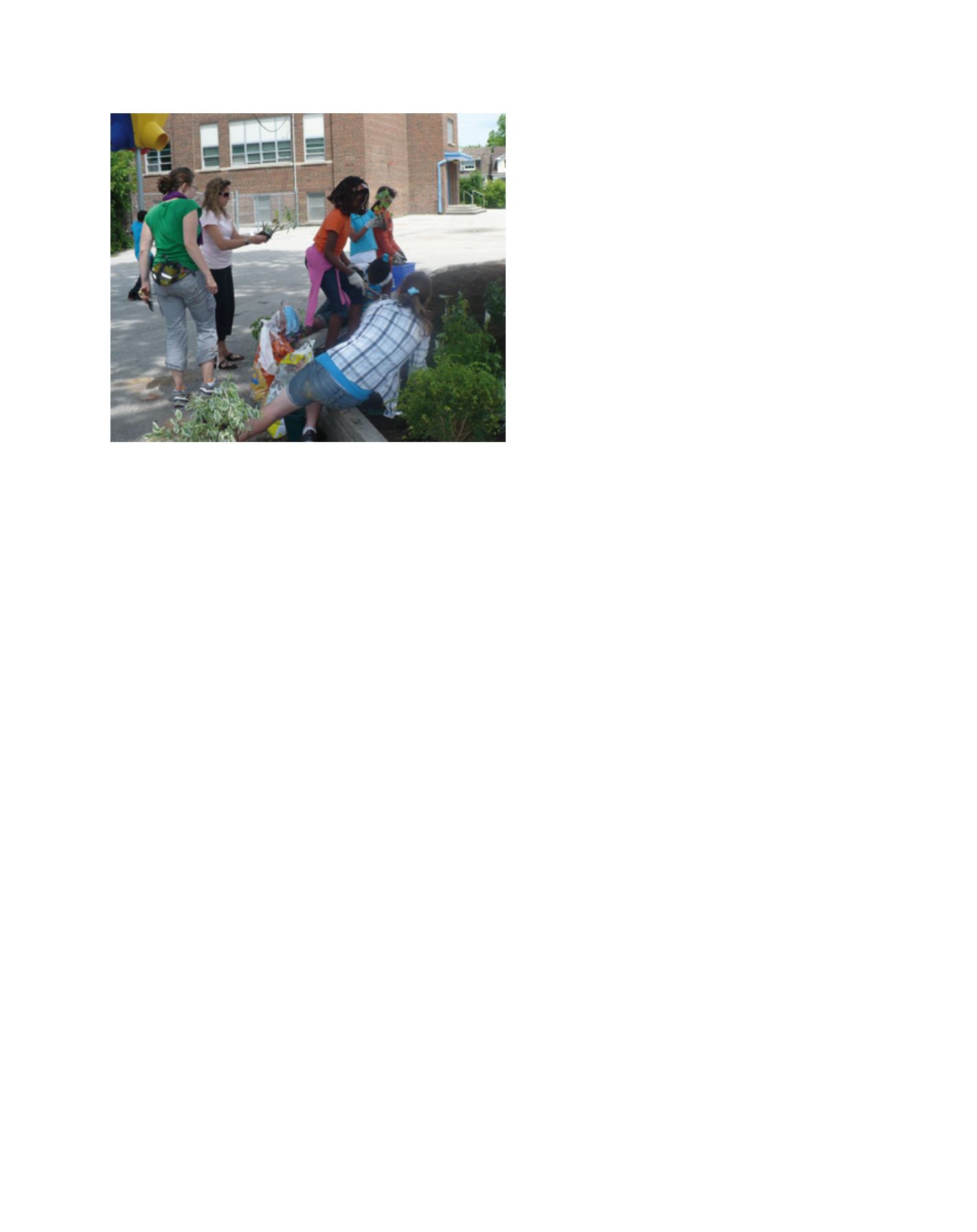

[
] 82
standalone courses, as strategies and content that can be introduced
in any subject and at any level, as learning outcomes that are further
developed as the students move through the grades, as cross-curricular
content, and as both content and pedagogy that are infused throughout
the curriculum, teaching and learning. Schools are also engaged in ESD
projects and extra-curricular ESD-related activities.
The influence and integration of Aboriginal knowledge into ESD
and in particular, into the curriculum, has been an essential quality of
ESD across Canada. As part of its curriculum renewal, the Ministry of
Education in Saskatchewan articulated its vision for First Nations and
Métis education as part of a provincial education system that foun-
dationally places these ways of knowing together with the historical,
contemporary and future contributions of these peoples to create a
culturally responsive education system that benefits all learners.
Nunavut’s Education Act, which received assent on 18 September
2008, specifies that the public education system shall be based on
Inuit societal values and on the principles and concepts of Inuit
Qaujimajatuqangit (which translates as ‘that which is long known by
Inuit’). The population of Nunavut is more than 80 per cent Inuit, and
the territory’s education system reflects their essential beliefs, includ-
ing those governing their relationships with each other and with the
land. Many of these beliefs reflect the issues addressed in ESD.
In First Nations schools in Manitoba, numerous education projects
have been established that have targeted all areas of sustainability:
environmental, economic and social. Some of these have included
land-based initiatives that support a traditional sustenance way of life
(for example trapping and fishing); school gardens; cultural and tradi-
tional knowledge youth camps; First Nations language immersion;
astronomy from an indigenous perspective; community traditional
names mapping; and infusion of First Nations knowledge and culture
into the curriculum. In essence, the work of Manitoba First Nations
Education Resource Centre to provide curriculum and project
support for a quality education grounded in the local environment
and community is an advancement of ESD in First Nations schools.
An example of an ESD cross-curricular activity that had wide-
spread positive implications for a northern community is the Mel
Johnson School gardening project in Wabowdan,
Manitoba. This community is literally growing a health-
ier life through an ever-expanding school gardening
project where students are supported in placing gardens
at their homes. This project teaches students valuable
skills in sustainable food production, healthy eating and
food preparation. Further, participation in this project
gives the students a sense of pride, resulting from being
given responsibility and guidance that lead to the expe-
rience of accomplishment and success. Following the
example set by their children, many parents in this
mainly Aboriginal community have shown interest in
edible gardening and incorporation of more varieties of
fresh vegetables in their families’ diets.
Priority 2: building ESD capacity through
professional learning and research
It is imperative that professional learning and research
be supported within the K-12 education community
(educators, faculties of education, school operations
staff, government education officials and other educa-
tion stakeholders) for effective ESD. While the education
community may already be engaged in some aspects of
ESD, it is important to further enhance the strengths and
networks in place through professional learning.
Training for teachers and other professionals in ESD is
delivered by ministries, school boards, teacher associa-
tions, universities, not-for-profit organizations and many
other groups, using classrooms and active learning and
often developing networks of educators as a consequence.
To help bring about system-wide ESD and the
systemic change required in school divisions and
schools in Canada, the Sustainability and Education
Academy (SEdA) was formed. SEdA is a partnership
between Learning for a Sustainable Future, the Faculty
of Education, and the UNESCO Chair on Reorienting
Teacher Education towards Sustainability – all at York
University in Toronto. SEdA’s Education Leaders’
seminar motivates and equips senior education officials
to lead the integration of sustainability as a core value in
all aspects of formal education, including policy, curric-
ulum teaching, learning, professional development and
the sustainable management of human, physical and
financial resources. The seminar is designed for senior
officials from ministries of education, school boards
and faculties of education across Canada. The seminar
is also focused on creating networks that can work
together in the future.
Priority 3: identifying and promoting learning
resources and research to support ESD
The education community in Canada needs ESD learn-
ing resources that support curriculum and professional
practices, as appropriate. Ministries and departments
of education produce, finance, contribute to, assess
and make available a vast selection of materials tied to
the learning outcomes linked to the issues subsumed
in sustainable development. Other government depart-
ments and non-governmental organizations (NGOs)
Students at St. Dunstan Catholic School planting vegetables and native
species in their school garden
Image: Learning for a Sustainable Future’s EcoLeague
















